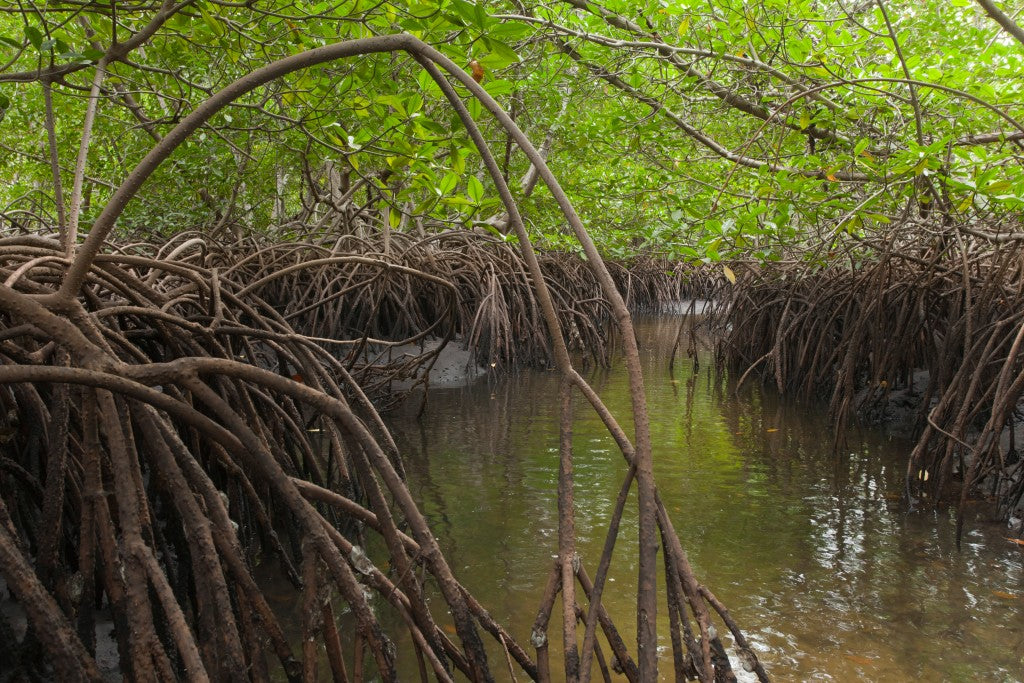Forests around the world serve a variety of important purposes. It’s well known that trees inhale carbon dioxide, a dangerous greenhouse gas, and exhales the oxygen we breathe. Animals also rely on forests for critical habitat. And for anyone who’s spent much time in the forest, they are relaxing, soothing places. But in some parts of the world, forests have a profound impact on water, wildlife, and people too.
In Madagascar, tentree has planted more than one million mangrove trees. To focus so much on one kind of tree underscores just how important they are. Mangroves are a type of tree that grows in the water along coastlines, typically rooting themselves directly in water. These trees serve several important roles.
Mangroves absorb carbon dioxide

Mangrove trees store an incredible amount of carbon dioxide in comparison to other species of tree. Even though they only live along coastlines and occupy a tiny fraction of the world’s surface, they are the most carbon-rich forests in the world. When we lose these trees, we lose the ability to remove excess carbon from the atmosphere. When it builds up, this greenhouse gas contributes to climate change. Climate change is likely to cause rising sea levels, which worsens the issue of water encroaching on important farmland.
Mangroves protect coastal habitats

Because mangroves root themselves directly in the water, their roots lock in the soil along coastlines. When mangrove trees are cut down and removed, strong storms are able to peel away coastlines, little by little. This causes the destruction of habitat and farmland too.
Mangroves help people out of cyclical poverty

The roots of these trees help lock in coastlines and prevent water levels from rising. In the absence of mangroves, coastlines begin to break down, farmland is lost, wildlife disappears, and local fishers are negatively impacted.
The fish that live in the water around mangroves serve as an important source of food and employment for locals. When Madagascar began losing its mangroves, the fishers had fewer and fewer fish to catch. The waters became empty and people found themselves unable to afford their own fishing equipment.
This lead to a wealthier group of people, who would come to be known as fishlords, owning all of the fishing equipment and then renting it out to poorer fishers.

In Madagascar, it is an unwritten “code” that fishers who rent fishing equipment be paid fairly for the fish they catch. The fishers would take the fishlord’s boats and nets out, catch fish, and sell the fish to the fishlord at a reasonable price. But when the fishlords found themselves in control of the necessary equipment, they rewrote the unwritten rule.
Not only would the fishers have to pay for the equipment, but the fish they sold to the fishlord’s was purchased at half or sometimes less than half as much as what was once commonly accepted as a fair price. This lead to a debt crisis in coastal communities of Madagascar, where the fishers would owe more and more debt to the fishlords.
The work that tentree has done planting these million mangrove trees is helping to break fishers out of that cycle of debt and poverty. By replanting the ecosystems that the fish require to live, fishers are able to catch more fish, get out of debt, and finally purchase their own equipment.

The story that your mangrove trees tell is a big one, and the impact they have is far-reaching. By planting trees like mangroves, we are able to help protect the world’s most important waterways.

